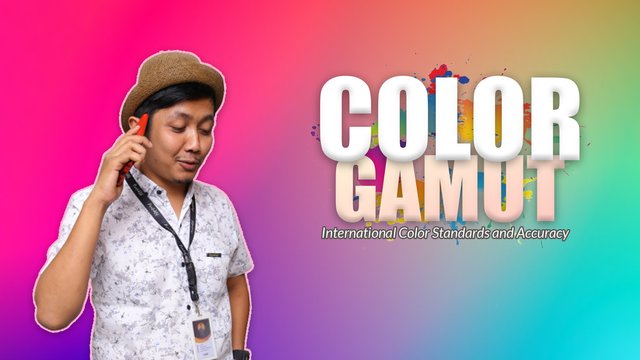#Club5050 - Color Gamut Part 3 (Last Part) - International Color Standards and Accuracy


Hello guys - Back again with me @atim1234.
In this post, I want to continue with the Color Gamut Meterial, this is the 3rd material, after I gave the previous 2 materials, namely:
Alright, in this 3rd material, we will discuss advanced material, namely:

International Color Standards and Accuracy.

There are different color standards used by digital devices nowadays that are suited to their own demands in the digital world as well as in the graphic design world.

source image
Because the color accuracy portrayed is actually true, the better the color standard integrated into a monitor, the more costly the monitor.
So, what exactly are the International Color Standards?

sRGB

This color standard is most widely utilized to display a picture in digital devices nowadays. This Color Standard is used on devices including as displays, printers, and the internet today.

source image
Microsoft and Hewlett Packard released the sRGB color standard in 1996, and it was the default color system in Windows until recently.
When compared to other color standards, sRGB has the poorest color coverage. The sRGB color profile, on the other hand, is supported by all modern digital display devices, hence this standard is extensively utilized by people.

Adobe RGB

Adobe RGB has a broader color coverage than sRGB. The Adobe Company created this Color Standard in order to address the flaws of sRGB.

source image
And this color standardization is frequently employed by photographers as well as graphic designers, particularly those who work in the printing industry. Because Adobe RGB colors are more "dynamic" and have a more "vibrant" color combination.

source image
However, in order to utilize the Adobe RGB Color Standard, you must have a Display or Monitor that meets this standard, which is more expensive.

NTSC

The National Television Standards Committee, or NTSC, is a color standard that was created for television in 1953.

source image
In ancient times, the most generally used form of TV was a CRT monitor, sometimes known as a tube TV. This TV was quite unstable and imprecise in showing colors at the time. and In 1976, the European Broadcasting Union (EBU) adjusted NTSC, and now, NTSC is known as 72 % NTSC, which is based on TV technology that is now better and more reliable.

DCI-P3

DCI-P3, or Digital Cinema Initiatives – Protocol 3, color standards for the digital cinema business and films. It was launched by the association's members Warner Bros., Metro-Goldwyn-Mayer, Twentieth Century Fox Film, Universal Studios, and SONY Pictures Entertainment

source image
DCI-P3 has 25% greater color coverage than sRGB.
This standard is also extremely essential in the realm of graphic design because if we develop a design using a screen that has this color standard, we will observe situations in which end-users will view it the same as the creator.
As a result, this becomes critical for us in order for our work to be published and viewed by others in full color.
If a work is to be printed, we should use AdobeRGB to simulate CMYK printing. If, on the other hand, your work is exhibited digitally on a Display P3 capable device, the artwork is previewed on the DCI-P3 monitor.

Hopefully Helpful, Happy creative!
Thank you

Best Regards To :
@milakz
@daytona475
@ftz
@papi.mati
@steem.skillshare
My social media
Instagram : https://www.instagram.com/abenk_bolang21/
Facebook : https://www.facebook.com/abenk.bolang21/
Twitter : https://twitter.com/abenkbolang
Email : [email protected]
Join Our Discord

50100200300400500
10002000300040005000
10000
